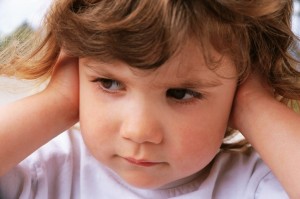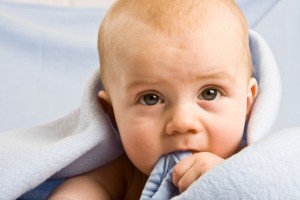June 2012
Cradle cap, ear infections and teething – suddenly your
child is sick. Gentle, natural medicines are often helpful here, particularly homeopathic
medicines. In fact, many parents consider homeopathy a blessing to their children as well as to themselves.
Homeopathic medicines can be quick and effective for
treating infant teething or colic, turning cranky babies into giggling cherubs.
They can reduce the pain and discomfort of a child’s earache, which sharply
decreases the need for antibiotics or ear tubes. They can strengthen the
child’s own natural defenses so that he can fight off that cold or flu that
every other child in school is getting. And they can benefit the hyperactive
child, helping to calm his restlessness.
Using safer, natural remedies, such as homeopathic
medicines, is particularly important when treating infants and young children.
Their young bodies are developing. Their nervous systems are just beginning to
integrate with the endocrine and immune systems and various organ systems. The
human organism can be incredibly resilient, but it can also be very fragile –
especially during infancy.
Because homeopathic remedies are natural and contain only
minute amounts of the active ingredient, they are particularly suitable for
pregnant women, babies and children. An allergic reaction to the pellets can
basically be ruled out.
The challenge lies in finding the correct remedy for your child. Careful questioning and observation
is necessary. This is how the symptoms of an illness are found out. Because a
remedy that helps one child, may not be the right remedy for the next.
In this article, I would like to cover some common childhood
health problems for the age group of 0 – 5, with a special focus on cradle cap,
ear infections and teething.
Cradle Cap
This is a common condition that can affect the scalp of
babies and young children. Although it looks unpleasant, it is actually a
harmless skin irritation which is caused by the over-production of sebum, the
oily substance produced by the skin’s sebaceous glands. This causes a build-up
of a greasy-like crust on the scalp. Occasionally, cradle cap can spread beyond
the scalp, which then becomes known as seborrheic dermatitis. It can also be a
precursor to eczema.
| When to call your Doctor about Cradle Cap |
- When shampooing or combing the scales from
your baby’s hair, always check for signs of a local infection. If you notice
that the area is warm and red, or is developing an infected looking
discharge, consult your pediatrician.
Like most homeopathic preparations, remedies for cradle cap
are symptom specific. Choose the remedy that most closely matches your child’s
symptoms.
Sulphur is a
general remedy for skin conditions. Use Sulphur for the infant whose cradle cap
may be oozing and very itchy.
Thuja is for the
child who is cooler and calmer and likes being snuggled. If Sulphur doesn’t
clear your infant’s cradle cap, try a dose of Thuja.
General Recommendations
If your infant has cradle cap, do not pick at the lesions to
remove scales. This can cause an infection.
Rub calendula lotion, vitamin E oil, aloe vera liquid, or
almond oil into your baby’s scalp. Then shampoo and gently comb away the
loosened scales with a fine-toothed comb.
Give your child homeopathic Sulphur or Thuja.
A nursing mother should take an acidophilus supplement, as
well as primrose or borage oil. A bottle fed baby should be given bifidus with
his formula.
Massage evening primrose oil lotion into your baby’s scalp
nightly.
Prevention
There is no sure way to prevent cradle cap, but keeping your
baby’s scalp clean and dry is helpful.
To prevent accumulation of dead skin cells, gently but
thoroughly brush or comb your baby’s hair every day.
When shampooing your infant’s hair, gently but thoroughly
wash his scalp to clear away any excess oil that might otherwise accumulate.
Ear Infections

Pediatricians and parents alike will agree that otitis media
(commonly called an ear infection) is the number one reason why parents bring
their children to see a pediatrician. Who hasn’t heard a mom complaining about
her child’s repeated ear pain? What mom hasn’t questioned the efficacy of
antibiotics after receiving the tenth prescription for it, when after all the
expense and side effects, the problem still remains unresolved?
Most children outgrow ear infections as their bodies mature
and the structure of the middle ear changes. As a child grows, the Eustachian
tube begins to curve downward, allowing fluids to drain more easily. When the
Eustachian tube develops its characteristic mature curve, fluids drain more
readily and infections are less of a problem. When fully mature, the Eustachian
tube has a pronounced downward angle.
Ear infections are often a complication of a common cold or
other upper respiratory infection, such as infection of the adenoids, tonsils,
or sinuses. They are sometimes accompanied by coughing, runny nose, sore
throat, and, occasionally, vomiting and diarrhea. Depending on the cause of the
infection, a fever may be present.
A child who can talk will be quick to tell you: ‘’My ear
hurts!’’ Babies and toddlers will ‘’tell’’ you by pulling or tugging on their
ears, by rubbing or hitting their ears, or by fussing and crying. A young
infant may simply be irritable or run a high fever for no apparent reason.
Another common symptom of ear infection, which your child
may not have the words to express, is a feeling of fullness and pressure. This
is caused by the excess fluid pushing against the eardrum. Your child may have
a slight hearing loss in the affected ear. In most cases, this is temporary.
Unless an acute ear infection is associated with meningitis, an uncommon
occurrence, a single episode is unlikely to lead to hearing loss. Concern about
hearing loss increases when a child experiences long-term congestion or fluid
in the middle ear. According to the American Academy of Pediatrics, recurring
ear infections with hearing impairment may slow speech and learning
development, even if there is no permanent hearing loss.
After initial treatment, if your child does not improve
within twenty four hours, call your doctor again. The risk of permanent hearing
loss increases if an ear infection is not properly treated or does not respond
to treatment promptly. It may be necessary to try another treatment.
Emergency
Treatment
If your child experiences a sudden, severe pain, with
drainage from the ear, it can mean that he has a perforated eardrum. When the
buildup of pressure finally causes the drum to rupture, the relief from
pressure can actually cause a dramatic lessening of the pain. Even if your
child seems to be feeling better, take him to the doctor right away for an
examination.
If your child experiences fever, chills, dizziness, or a
serious hearing loss, call your doctor. These signs indicate that the infection
may have worsened or traveled to the inner ear, requiring prompt medical
attention.
Homeopathy
If your child has a fever, a red face, dilated pupils, and
hot and moist skin, give him Belladonna.
This is for a child with a throbbing earache that comes on suddenly and is
relieved by resting with the head elevated.
For an earache that occurs with teething, give Chamomilla. The Chamomilla baby is
crying, angry, obstinate, whiny, and irritable, but is comforted when carried
around. Often he has one red cheek and one pale cheek with hot, moist skin, and
his pain is intolerable.
If your child has a fever along with an ear infection, give
him Ferrum phosphoricum. This
homeopathic preparation can be given together with another symptom-specific
remedy.
General
Recommendations
The pain of an earache is caused by pressure as the
congested middle ear pushes on the eardrum. To promote drainage, prop your
child at a 30 – degree angle.
Apply a warm compress. If the warmth is comforting, use that
knowledge to guide you in choosing an appropriate symptom-specific homeopathic
remedy. Some children seem to feel better with a cold compress. Experiment with
hot and cold to see what helps. If your child doesn’t like the warmth, give him
homeopathic Pulsatilla.
If your child has an ear infection, avoid taking him on
airplane flights. A child with an earache or upper respiratory infection will
be very uncomfortable traveling by air. Air travel does not necessarily injure
the ear or increase your child’s risk of developing and ear infection, but the
change of air pressure in the cabin on takeoff and landing can greatly increase
the pain. If you must fly with a child who has an ear infection, it may be
worthwhile to give him nasal decongestant drops, along with acetaminophen,
before takeoff.
Prevention
Do not expose your child to cigarette smoke. Studies show
that children who live in households with one or more smokers suffer more ear
infections than those from smoke-free households.
Do not give your baby a bottle to suck on while he is lying
flat on his back. This position allows fluid to drain directly into the middle
ear. Instead, hold or prop your infant at a 30-degree angle.
Massaging your child’s ear can help keep the Eustachian tube
open. Using gentle pressure, draw a line along the back of the ear and down the
back of the jawbone. Gently push and release the flap of skin in front of the
ear several times. You can also massage your child’s ear by placing the fleshy
part of your palm, just below your thumb, over your child’s ear, and rotating
the ear in all directions.
Use an elimination diet to determine if food allergies are
contributing to the problem. Cow’s milk tops the list of common troublemakers.
Other common allergens worth deleting for a child with recurring ear infections
include eggs, wheat, corn, oranges, and peanut butter.
If your child is subject to recurring ear infections, do not
expose him to common irritating allergens such as pet dander. Down comforters
and pillows are another possible source of trouble. Items like carpets,
draperies, and stuffed toys all collect dust and are possible offenders as
well.
Teething

| Teething is the process whereby a baby’s teeth break through the gums. Children have around 20 milk or primary teeth, and usually have a complete set by the age of two. |
Babies usually start producing teeth when they are about five months
old. Many babies suffer greatly as it can be a painful process. His or her
sleep may be disturbed and there will probably be quite a high level of
irritability during the daytime too. As the teeth emerge, your baby will find
comfort in gnawing on a cold object.
| When to Call the Doctor about Teething |
- Teething itself causes stress to the body,
which is why a teething infant is more susceptible to illness. Teething may
be accompanied by fever and diarrhea, which indicate illness, so if these
symptoms occur, or if your child seems acutely uncomfortable, seek medical
advice.
Homeopathy has some good remedies to help with teething
problems, depending on your child’s individual symptoms. For example:
Calcarea carbonica
works well for babies with delayed teething and delayed closing of the
fontanelles. They typically have a round, shiny “Gerber baby’’ face. These
babies often have difficulty assimilating calcium and calcarea carbonica will
help with that, thus facilitating teeth coming in.
Calcarea phosphorica
has similar symptoms with delayed teething and closing of the fontanelles, but
these babies are typically thin, with dark hair and eyes.
Chamomila is a
remedy commonly used for teething. It is particularly beneficial for infants
whose gums bleed easily and are red, swollen, and sensitive to the touch. The
baby is very irritable, feels worse at night, worse with warmth, and is
comforted when carried around.
If neither of the above remedies seems right, a combination
teething remedy may be helpful as well. It is best to consult with your
homeopath regarding the proper choice of remedy.
General Recommendations
- Choose an appropriate homeopathic remedy.
- Give a teething infant something hard to bite
on, such as a hard rubber teething ring. Biting helps to balance the pressure
exerted by an emerging tooth. - Cold soothes and numbs sore gums. Keep several
clean, hard rubber teethers in the refrigerator or freezer for your infant to
chew on. If your baby welcomes the cold, as one item warms, substitute a cold
one. - You can also massage some clove oil into your
baby’s gums. Clove oil is a natural anesthetic. A combination of homeopathics and clove oil
may work really well together to help relieve teething pain!
Prevention
While teething is a natural process and cannot be prevented,
the pain caused by teething can be minimized by following the suggestions
above.
Homeopathic remedies are able not only to relieve many
common acute problems in children but can also help to prevent recurrent bouts
of illness. And homeopathic medicines can treat both physical ailments and
emotional upsets.
If your child has recurrent bouts of these conditions, I
strongly recommend you seek professional homeopathic care, which may be able to
cure the chronic ailment that underlies the symptoms. Treating the underlying
disease often requires what is called constitutional homeopathic care. After
careful analysis of the child’s heredity, health history, and complete physical,
emotional and mental symptoms, the professional homeopath prescribes an
individualized homeopathic medicine that is often able to promote a deep cure
of chronic disease. Although constitutional care will not always cure a chronic
ailment, it is often successful in at least reducing the severity and intensity
of your child’s complaints.
Irene Schwens,
C.Tran., DHMHS
Homeopath









